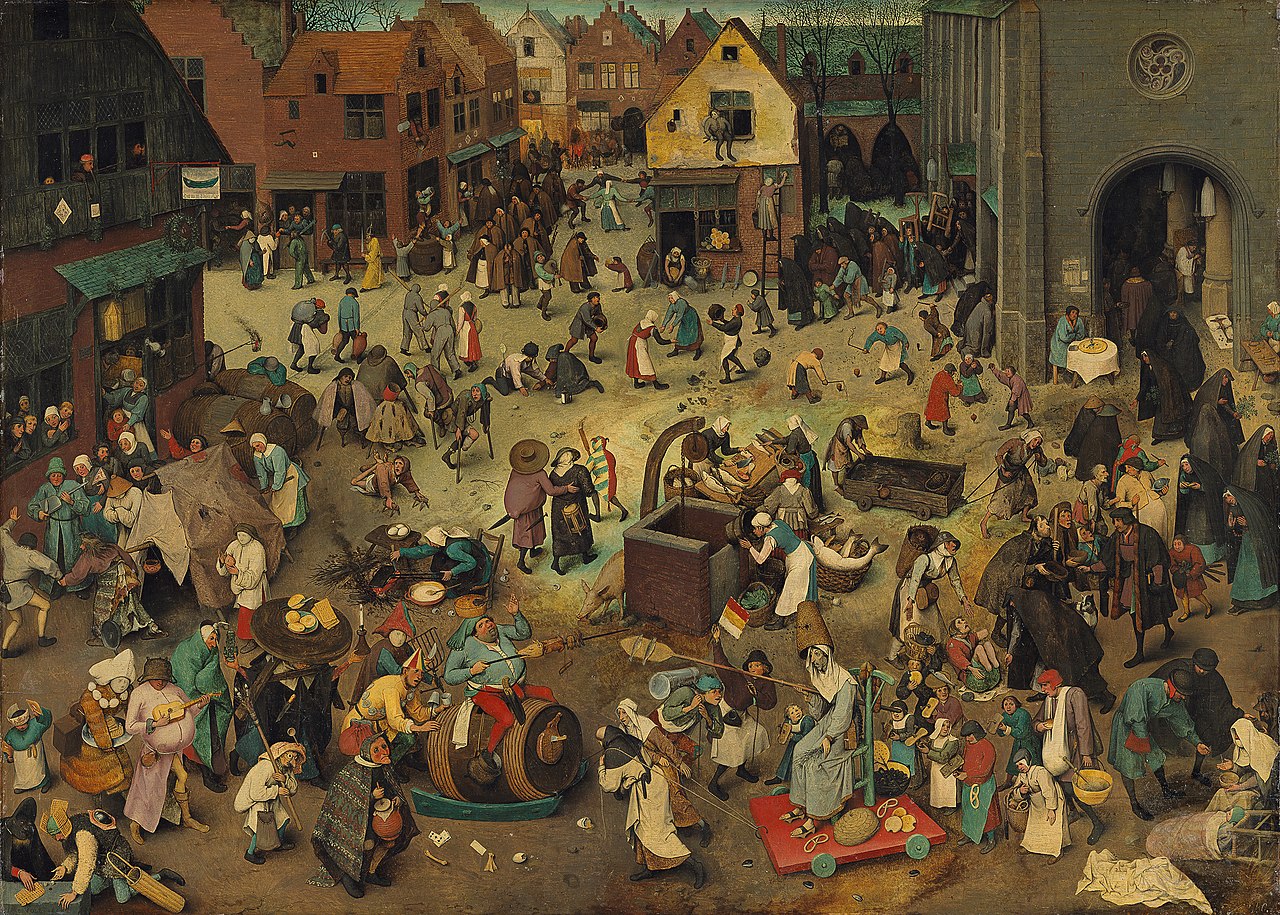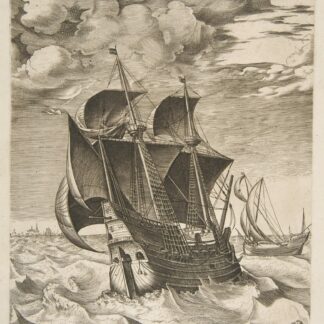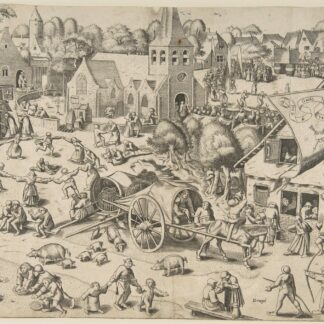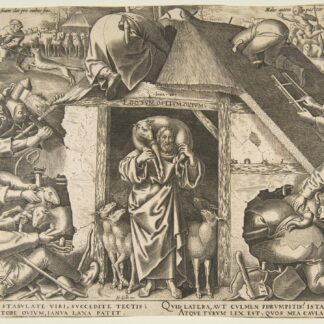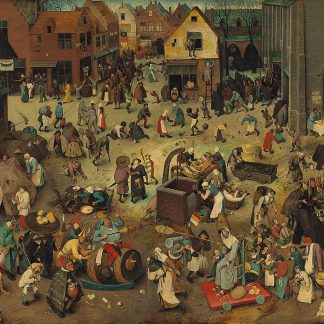Description
The literary theme of the struggle between personifications of Lent and Shrove Tuesday dates as far back as the year 400 with the Psychomachia. The 13th Century French poem La Bataille de Caresme et de Charnage describes a symbolic battle between different foods, meat against fish. A likely graphic precursor of the painting is a 1558 Frans Hogenberg print in which the personifications of lean and fat are driven together on carts by their supporters. The supporters attack each other with fish, waffles, cookies and eggs.
Also in 1559, Bruegel produced a series of prints of the Seven Virtues, which have formal similarities: an allegorical figure, against a background with a high horizon line, is surrounded by a crowd of figures who carry out various activities related to the subject. In the same year, Bruegel painted Netherlandish Proverbs, also modelled on a print by Hogenberg. The following year he produced Children’s Games. These three works are closely related, each forming a catalogue of folk customs. The works mark the transition of Bruegel from draughtsman to the painter of grand panels for which he is now known.


